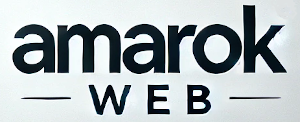Just when you think Volkswagen offers all its popular models in the United States, you might be surprised to learn that the robust Amarok pickup truck remains unavailable in the American market. If you’re wondering about the reasons behind this decision, there are several interesting factors at play.
You should know that the main obstacle preventing the Amarok from reaching U.S. shores is the infamous “Chicken Tax” – a 25% tariff imposed on light trucks imported into the United States. This tax dates back to 1963 and continues to affect foreign automakers’ decisions about which vehicles they bring to the American market. For Volkswagen, this tariff would make the Amarok significantly more expensive and less competitive against established domestic pickup trucks.
When you look at the American pickup truck market, you’ll notice it’s dominated by domestic manufacturers like Ford, Chevrolet, and Ram. These companies have spent decades building brand loyalty and perfecting their offerings for American consumers. Your typical U.S. pickup truck buyer tends to favor these established brands, making it challenging for newcomers to gain a foothold in the market.
You might also be interested to know that Volkswagen would need to modify the Amarok substantially to meet U.S. safety and emissions standards. These modifications would require significant investment, which the company would need to recover through sales. Given the competitive nature of the American pickup market, VW has calculated that the return on investment wouldn’t justify the costs.
If you compare the Amarok’s size to American pickups, you’ll find it sits in an awkward position. It’s larger than compact trucks but smaller than full-size pickups, making it difficult to position in the market. Your options in this segment are already covered by vehicles like the Toyota Tacoma and Ford Ranger, which have established strong followings.
You can also consider Volkswagen’s manufacturing strategy. The company doesn’t currently have a facility in North America equipped to produce the Amarok, and building one would require massive investment. If you factor in the costs of tooling, training, and establishing supply chains, you can understand why VW hesitates to make this commitment.
When you examine VW’s current market strategy in the U.S., you’ll notice their focus on SUVs and electric vehicles. The company has determined that your needs are better served by investing in these segments rather than entering the highly competitive pickup truck market. This decision allows them to concentrate their resources on areas where they believe they can achieve better market penetration and profitability.
If you’re hoping to see the Amarok in the U.S. market someday, you might have to wait until Volkswagen finds a way to overcome these challenges or decides to partner with an American manufacturer. Until then, you’ll have to admire this capable pickup truck from afar.
